Wenhu Zhang
VersatileGait: A Large-Scale Synthetic Gait Dataset Towards in-the-Wild Simulation
Jun 01, 2021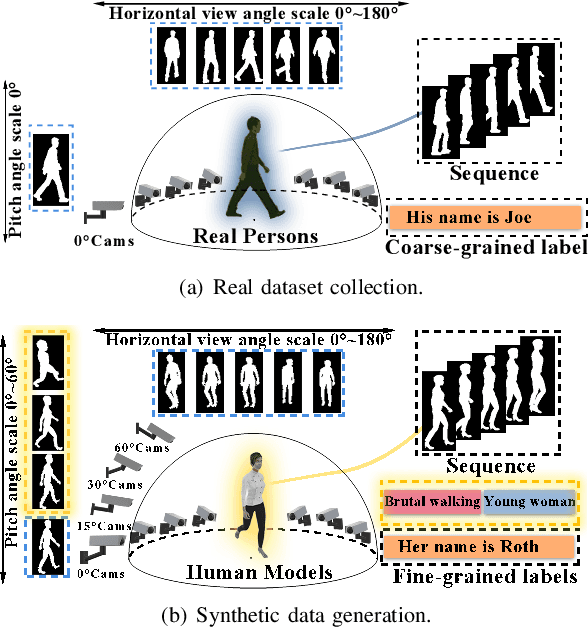

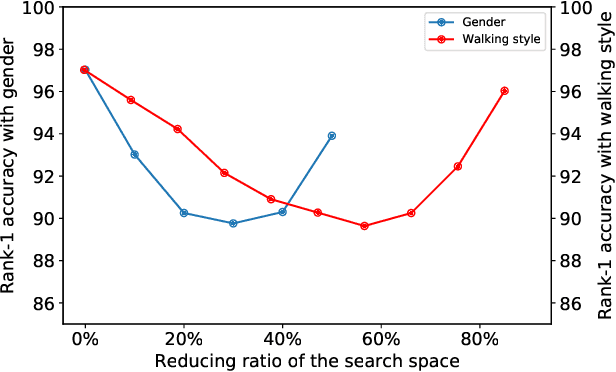
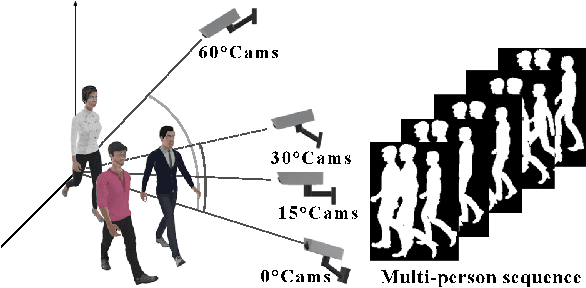
Abstract:Gait recognition has a rapid development in recent years. However, gait recognition in the wild is not well explored yet. An obvious reason could be ascribed to the lack of diverse training data from the perspective of intrinsic and extrinsic factors. To remedy this problem, we propose to construct a large-scale gait dataset with the help of controllable computer simulation. In detail, to diversify the intrinsic factors of gait, we generate numerous characters with diverse attributes and empower them with various types of walking styles. To diversify the extrinsic factors of gait, we build a complicated scene with a dense camera layout. Finally, we design an automated generation toolkit under Unity3D for simulating the walking scenario and capturing the gait data automatically. As a result, we obtain an in-the-wild gait dataset, called VersatileGait, which has more than one million silhouette sequences of 10,000 subjects with diverse scenarios. VersatileGait possesses several nice properties, including huge dataset size, diverse pedestrian attributes, complicated camera layout, high-quality annotations, small domain gap with the real one, good scalability for new demands, and no privacy issues. Based on VersatileGait, we propose series of experiments and applications for both research exploration of gait in the wild and practical applications. Our dataset and its corresponding generation toolkit will be publicly available for further studies.
Deep RGB-D Saliency Detection with Depth-Sensitive Attention and Automatic Multi-Modal Fusion
Mar 22, 2021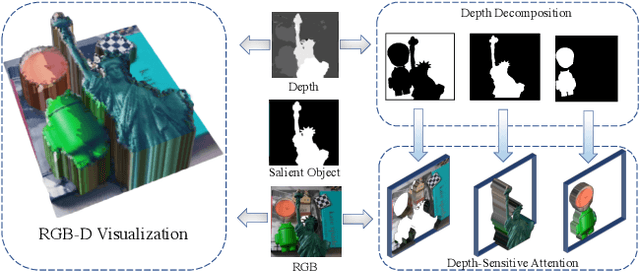
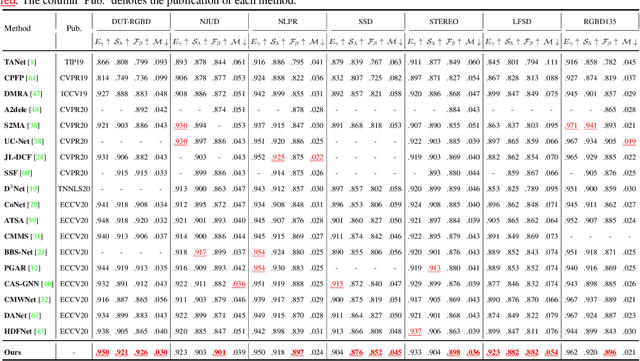
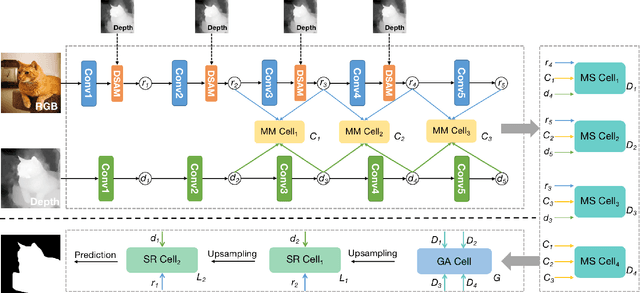
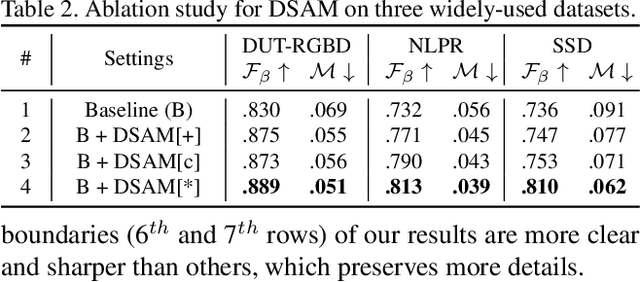
Abstract:RGB-D salient object detection (SOD) is usually formulated as a problem of classification or regression over two modalities, i.e., RGB and depth. Hence, effective RGBD feature modeling and multi-modal feature fusion both play a vital role in RGB-D SOD. In this paper, we propose a depth-sensitive RGB feature modeling scheme using the depth-wise geometric prior of salient objects. In principle, the feature modeling scheme is carried out in a depth-sensitive attention module, which leads to the RGB feature enhancement as well as the background distraction reduction by capturing the depth geometry prior. Moreover, to perform effective multi-modal feature fusion, we further present an automatic architecture search approach for RGB-D SOD, which does well in finding out a feasible architecture from our specially designed multi-modal multi-scale search space. Extensive experiments on seven standard benchmarks demonstrate the effectiveness of the proposed approach against the state-of-the-art.
VersatileGait: A Large-Scale Synthetic Gait Dataset with Fine-GrainedAttributes and Complicated Scenarios
Jan 05, 2021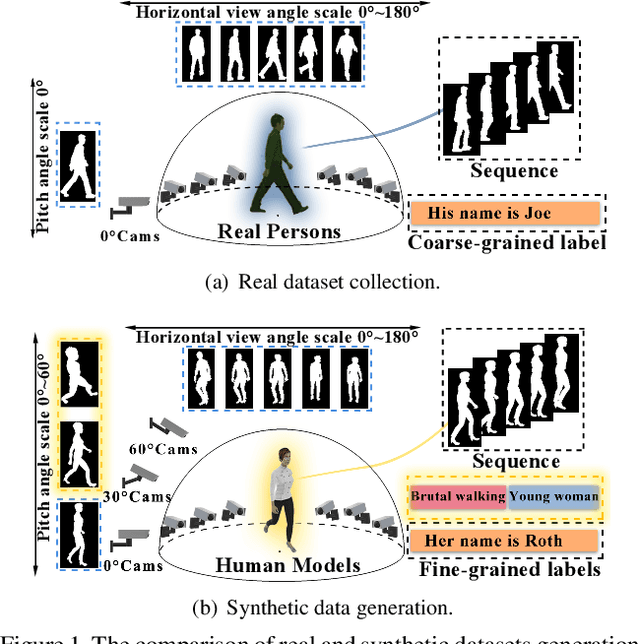
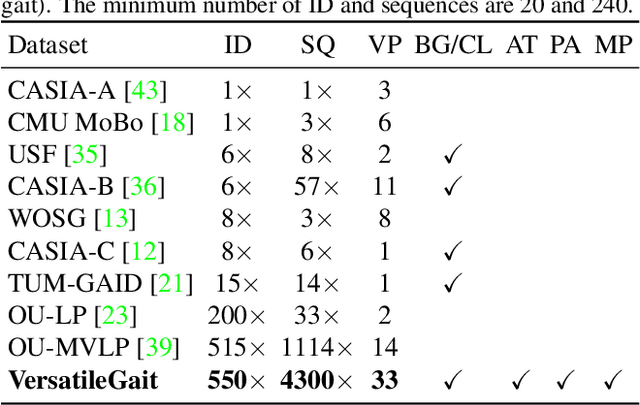
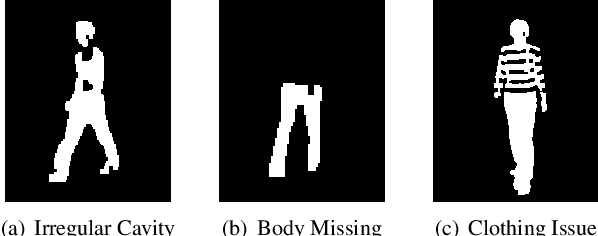
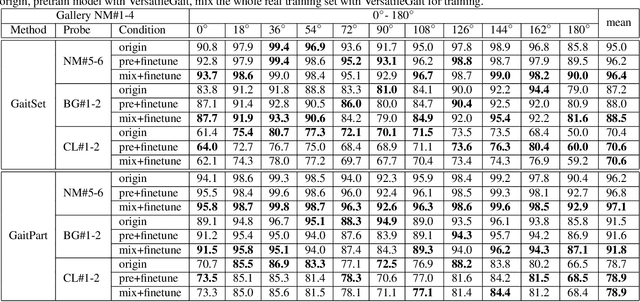
Abstract:With the motivation of practical gait recognition applications, we propose to automatically create a large-scale synthetic gait dataset (called VersatileGait) by a game engine, which consists of around one million silhouette sequences of 11,000 subjects with fine-grained attributes in various complicated scenarios. Compared with existing real gait datasets with limited samples and simple scenarios, the proposed VersatileGait dataset possesses several nice properties, including huge dataset size, high sample diversity, high-quality annotations, multi-pitch angles, small domain gap with the real one, etc. Furthermore, we investigate the effectiveness of our dataset (e.g., domain transfer after pretraining). Then, we use the fine-grained attributes from VersatileGait to promote gait recognition in both accuracy and speed, and meanwhile justify the gait recognition performance under multi-pitch angle settings. Additionally, we explore a variety of potential applications for research.Extensive experiments demonstrate the value and effective-ness of the proposed VersatileGait in gait recognition along with its associated applications. We will release both VersatileGait and its corresponding data generation toolkit for further studies.
 Add to Chrome
Add to Chrome Add to Firefox
Add to Firefox Add to Edge
Add to Edge